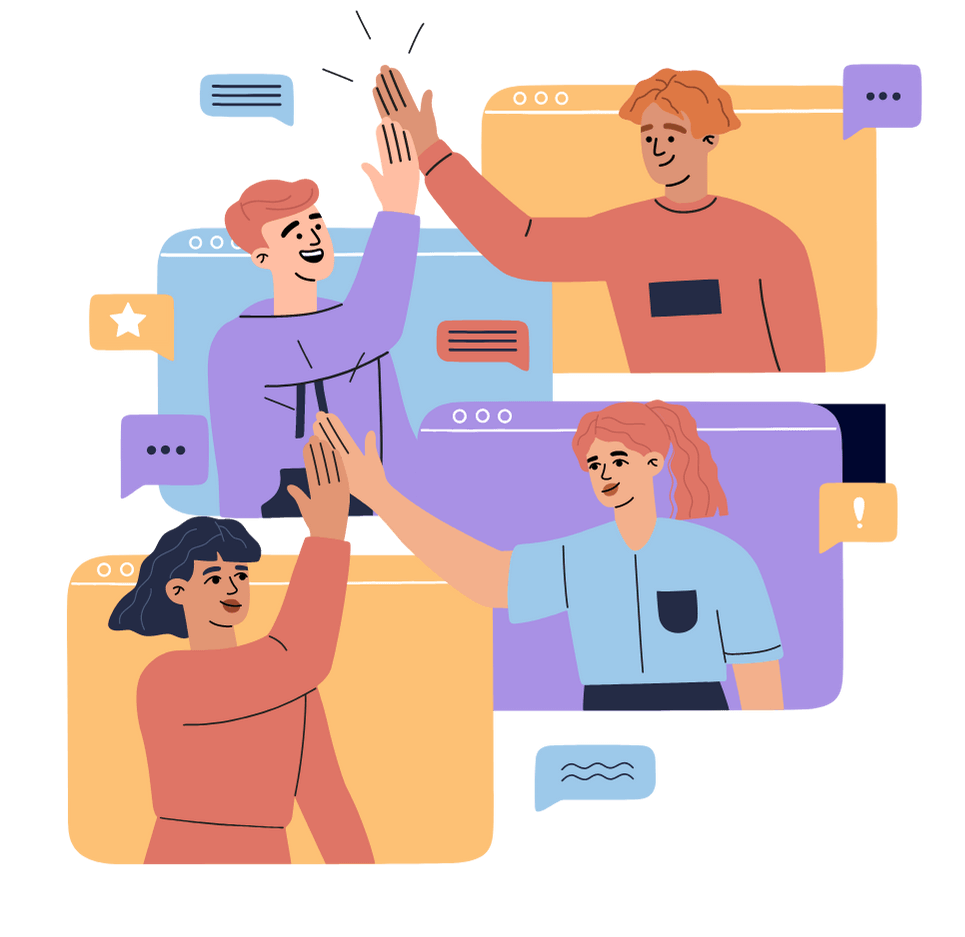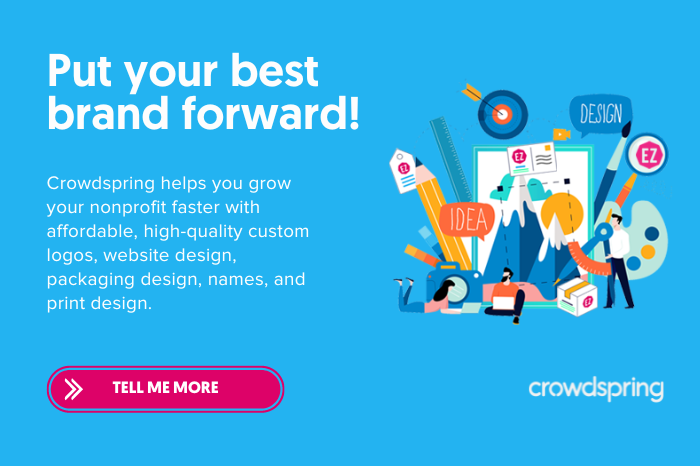Four Proven Marketing Strategies for Nonprofit Events

You’ve spent weeks (maybe months!) planning a stellar event. You’ve lined up the perfect entertainment, food, and venue to leave your nonprofit’s guests awe-struck when they leave.
But, as the days count down and the event draws closer, your registration numbers aren’t hitting the mark.
It’s a nightmare scenario!
If you’ve put significant energy into planning an event, your marketing efforts must match that effort. An effective marketing strategy is crucial to spreading the word about your event, generating excitement and ensuring you receive plenty of registrations to blow your fundraising goals out of the water.
This guide will share four proven strategies to help your team market your nonprofit’s next event successfully.
Customize your marketing strategy for the event
“Nonprofit event” is a broad and diverse category. You could be marketing a fancy major donor gala, a family-friendly 5K fun run, or a fast-paced, competitive auction.
Now, you could technically use the same marketing techniques for each event type— and honestly, the foundational elements of your event marketing strategy should probably be similar across the board. (Don’t worry, we’ll cover those more general nonprofit event marketing techniques later in this guide.)
However, each event has a different audience, run time, and activities.
Use this to your advantage.
Consider what makes your event unique and how you can use that in your marketing strategy.
Take the example of charity auctions. Handbid’s charity auction guide offers strategies for creating a strong marketing strategy specifically for auction events:
- Promoting eye-catching auction items. Did you procure once-in-a-lifetime Super Bowl tickets? Or maybe a jersey signed by someone in the Football Hall of Fame? Highlight these high-ticket items in your marketing materials to show that there will be quality prizes up for grabs.
- Open your online auction website early for browsing. With Handbid’s auction software, you can put your auction in a public mode (i.e., Preview or Pre-Sale) and share a direct link with guests. They can then scroll through the auction items before the event and consider what they’ll bid on. This helps generate excitement among early registrants.
- Consider a mixed event. Want to include more guests from afar? Offer a hybrid event. Livestream your program online so guests outside the venue can join the fun. This will increase participation and likely increase those much-needed donations.
Auctions aren’t the only type of nonprofit event that lend themselves to unique and impactful marketing strategies.
For example, 5K race events often leverage peer-to-peer fundraising, where participants raise funds from friends and family members. Those events are inherently social, so your marketing strategy should also be.
For example, create a campaign encouraging participants to refer a friend. Then, you can give the duos a fun perk (like matching t-shirts!).

We just emailed you info about the Give Back program.
Use a multi-channel marketing strategy
As we said above, there are general event marketing strategies that work well, regardless of the type of event. Let’s discuss a few of those now.
A multi-channel marketing strategy involves using multiple communication channels to spread the word about an event.
You might be thinking that more channels are more work, right?
It might sound like more work but worry not – with the right tools, like an all-in-one event management platform, you can effortlessly integrate and manage various communication channels.
This effort is worth it for a few reasons:
- Not all of your supporters use the same marketing channels. For example, while Gen Z is flooding TikTok, it might be harder to reach them via direct mail. On the other hand, for older adult donors, it would likely be the opposite. Using multiple channels, you can reach supporters on the channels they prefer or even reach them in several places.
- Multiple touchpoints increase the likelihood of engagement. How many times do you view an advertisement before you take action? We’d guess it’s more than once. By sharing unique messaging on different marketing channels, you can market your event to guests more than once and increase the chance that they will register to attend.
The goal isn’t to share the same message/graphics/images/videos/etc. on every channel. Vary your messaging per channel to avoid creating a repetitive echo chamber. For example, on:
- Social media, share eye-catching images, graphics, or even video content with little text. Link to your website so your followers can learn more about the event.
- Your website, share a long-form blog post about the event, what it will support, and all details about getting involved. Consider highlighting the stories of individuals your organization’s work has positively impacted in the past.
- Other websites leverage retargeting ads to reach potential donors who visited your site but haven’t yet donated.
- Email and share a few-paragraph overview of the event and what it supports. Then, include a one-sentence mention in any update emails and a link to your website to learn more.
Beyond varying the way and amount of information you include across channels, the stories you tell also vary. So, for example, if you highlight constituent stories and interview multiple people, your work has a positive impact. Then, highlight a different one on each channel. The goal is to ensure that, while supporters encounter information about your event multiple times, it’s a unique experience each time.
But be sure to maintain consistent nonprofit branding across all marketing channels. People need to quickly recognize your nonprofit regardless of the channel where they see your stories or messages.
Apply for Google Grants to boost search engine visibility
Do a quick Google search of any topic that interests you. What are the first listings on the search engine results page? We’d guess that they’re likely advertisements.
For example, when we search “Nonprofit,” the first listing is an advertisement for a local nonprofit in our region. Look closely — these ads almost look like organic listings, except that they say “Ad” to the left of the page title.
For businesses, search engine advertisements are a paid media source.
But ads can be free for nonprofits and are especially powerful for nonprofits that host local and regional events.
Google awards nonprofits with $10,000 in credits to create and host free advertising campaigns through its search engine’s Google Ad Grant program. So, you could create search engine advertisements that point directly to your nonprofit’s website or your event registration page to be shown to supporters who search relevant terms.
Here’s how it works:
- First, you have to apply for the Google Ad Grant. This three-step process includes registering with TechSoup, signing up for a Google for Nonprofits account, and applying for the grant.
- Once approved, create your first campaign. This includes writing the ad copy and setting up the Google Ad (i.e., choosing keywords, setting the location, etc.). For the second part, think of what people who would attend your event might type into the search bar, such as “Humane Society events,” “Nonprofit events in [location],” or “Fundraising for dog shelters in [location].” Each ad campaign will target a few related keywords associated with your event.
- Track your campaign’s success. Using Google Ads, set up conversion tracking to understand how many people are not only seeing your ads but following them and registering for the event after doing so. Use this information to continue improving your ad campaigns going forward.
The best part is that you can (and are encouraged to) tailor these ads to reach local audiences— i.e., those who can most attend an event in person. So, you’re not wasting your time or funds marketing to individuals who may not be interested.
Ask sponsors to help spread the word
Open up sponsorship opportunities for interested supporters and local businesses. Sponsors play a crucial role in your event, whether they donate money or venue space, catering services, merchandise, or the like. And they can help you build a strong nonprofit brand.
But a successful event marketing strategy takes a village, so loop your sponsors in on the fun!
There are several ways that sponsors can spread the word about your event, including:
- Hanging up and handing out flyers at their physical locations.
- Offering free fundraising event tickets.
- Posting about the event on their social media channels.
- Chatting with their customers about the event and how they’re supporting it.
You might hesitate to ask sponsors to give more (their marketing efforts) to your event. But remember, this also helps the sponsor.
Publicly supporting your organization can be an excellent public relations boost for business owners. So, let’s say they’re chatting about the event at their physical location— now, all of the customers in their vicinity know about the business’s philanthropic efforts.
Moreover, sponsors have a profound stake in the success of your event; increased attendance translates to enhanced visibility for the sponsoring companies. It’s crucial to express gratitude post-event: sending personalized eCards, free of charge, to donors, sponsors, and volunteers not only acknowledges their invaluable contributions but also fosters strong relationships. This gesture of appreciation keeps your organization at the forefront of their minds, fostering continued support for future events.
You can plan a fantastic nonprofit event, but that effort is moot if no one shows up.
It’s worthwhile to create a strong marketing strategy for your next event to ensure turnout is high. These tips will set your team up for success, from customizing your strategy to the event type to using more general best practices such as multi-channel marketing, Google Ad Grants, and sponsor assistance.
Design Done Better
The easiest way to get affordable, high-quality custom logos, print design, web design and naming for your business.
Learn How to Grow Your Business With Beautiful Design
